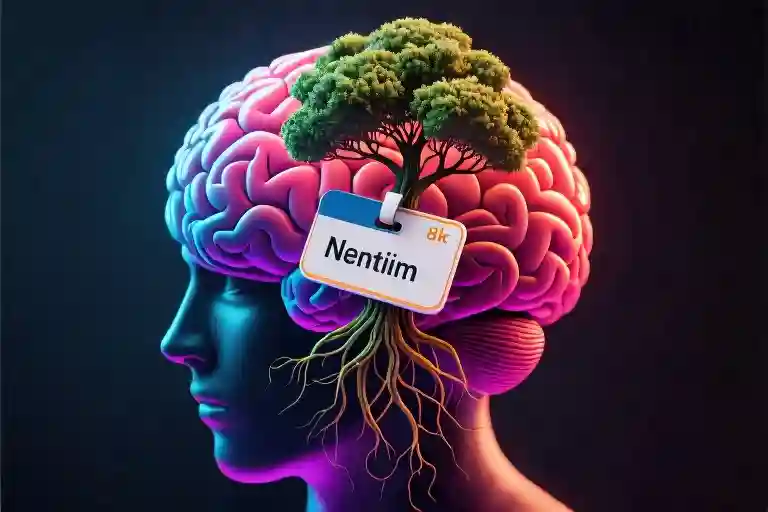The first words we hear in a delivery room—”It’s a boy!” or “It’s a girl!”—carry more weight than we realize. That initial declaration sets in motion a lifetime of expectations, assumptions, and invisible rules. According to Pew Research, 67% of people still believe gender is determined solely by biology, conflating it with physical anatomy. But what if we’ve been asking the wrong question from the very beginning?
Gender isn’t something we’re born with—it’s something we grow into, shaped by countless forces around us. This distinction matters because it changes how we understand everything from childhood development to workplace dynamics. Over the next sections, we’ll unpack how gender operates as a social construct, examine the mechanisms that reinforce traditional roles, and explore what happens when rigid norms collide with human complexity.
Consider the baby blanket dilemma. Hospitals still default to pink or blue, despite knowing nothing about the newborn’s future personality. This seemingly small tradition reveals our cultural obsession with categorizing—an obsession that extends far beyond nursery decorations. The colors represent entire systems of expectation: how one should speak, move, dream, and love.
We’ll start by untangling the fundamental difference between gender (a social identity) and biological sex (physical characteristics), then trace how society installs gender roles through family, education, and media. Later sections will confront the real-world consequences of these systems and highlight alternative approaches from global cultures. By the end, you might find yourself listening differently the next time someone asks, “Boy or girl?”—recognizing that question as the beginning of a story, not the full answer.
What Is Gender? Breaking Down the Basics
We often hear people use ‘gender’ and ‘sex’ interchangeably, as if they mean the same thing. They don’t. Understanding this distinction matters more than we might realize in our daily interactions and self-perceptions.
Sex refers to the biological characteristics we’re born with – chromosomes, hormones, reproductive anatomy. It’s what doctors note on birth certificates after that first physical examination. Gender, on the other hand, exists in a completely different realm. It’s the complex interplay of social expectations, cultural norms, and personal identity that shapes how we move through the world.
Consider how we automatically assign colors to infants – pink for girls, blue for boys. Or how we praise daughters for being ‘helpful’ while encouraging sons to be ‘strong’. These aren’t biological imperatives; they’re learned behaviors reinforced through countless subtle messages from childhood onward. That’s gender at work – a social construct so pervasive we often mistake it for natural law.
Three key concepts help untangle this:
Gender identity – a person’s internal sense of being male, female, neither, or somewhere along the spectrum. This may or may not align with their biological sex.
Gender expression – how someone presents their gender through clothing, mannerisms, speech patterns and other outward signals.
Gender roles – societal expectations about ‘appropriate’ behavior for men and women, from career choices to emotional displays.
These distinctions explain why labels like ‘female engineer’ or ‘male nurse’ feel jarring – they highlight exceptions to unspoken rules about who belongs where. The very need for these qualifiers reveals how deeply gender norms shape our perceptions.
Modern psychology recognizes gender as fluid rather than fixed, more like a palette than a checkbox. Some cultures have acknowledged this for centuries – the Hijra community in South Asia, Two-Spirit people in Indigenous American traditions, or the Fa’afafine of Samoa. Western societies are just beginning to catch up, expanding our vocabulary beyond the binary.
Next time you hear someone say ‘that’s not ladylike’ or ‘man up’, pause. These aren’t biological facts but cultural instructions – and like all human creations, they evolve. Understanding gender as separate from sex gives us the tools to question assumptions we’ve absorbed without examination, creating space for more authentic ways of being.
How Gender Roles Get Programmed Into Us
The pink aisle and the blue aisle didn’t appear by accident. Those rigid divisions in toy stores mirror something deeper about how society installs gender expectations like preloaded software. Long before we can question them, these rules get wired into our daily lives through three primary channels: our families, our schools, and the media that surrounds us.
Childhood Coding: Toys, Colors, and Unspoken Rules
Watch any children’s clothing section, and you’ll witness color policing in action – pastel pinks labeled “for girls” while navy blues get reserved for boys. This seemingly harmless tradition carries weight. A Cambridge University study tracked infants’ toy preferences and found no inherent difference until age two – exactly when gendered marketing kicks in. By three, most children will vehemently reject “wrong-gender” toys, having internalized the rules through subtle cues like a parent’s hesitation before buying a doll for their son.
The 1974 LEGO catalog offers a stark case study. Earlier editions showed children of all genders building together, but that year’s “Girls’ Section” featured passive scenes with dollhouse-like structures, while the main catalog displayed complex engineering projects. This wasn’t just product differentiation – it was behavioral conditioning packaged in plastic bricks.
Classroom Reinforcement: The Hidden Curriculum
Textbooks continue this programming through omission and distortion. When a Stanford research team analyzed science textbooks from six countries, male scientists appeared four times more frequently than females. Even more telling were the activity examples – boys depicted conducting experiments while girls recorded results. These patterns create what sociologists call “symbolic annihilation” – the erasure of certain identities from cultural narratives.
Gym classes often amplify this divide. The classic “boys play basketball while girls do aerobics” approach teaches more than sports – it reinforces who gets to be competitive versus cooperative, who should crave attention versus avoid taking space. These lessons stick. A LinkedIn study found women using collaborative verbs (“supported,” “helped”) in performance reviews 40% more often than men, mirroring childhood play patterns.
Media’s Feedback Loop
Commercials act as gender role delivery systems. Dish soap ads still overwhelmingly feature women, despite men doing 30% of household chores globally (UN Data). This “mom-only” framing creates a self-fulfilling prophecy – children who see domestic labor constantly gendered grow up replicating those patterns.
Even progressive media often falls into traps. Animated films now feature “strong female leads,” but a USC study found these characters still receive 50% less screen time than male counterparts and get interrupted more frequently. These subtle patterns teach viewers whose voices matter more.
The programming isn’t inevitable, though. Sweden’s gender-neutral preschools, where teachers avoid pronouns and encourage all types of play, produce children with 15% wider career aspirations (Journal of Experimental Child Psychology). Like any software, our gender coding can be rewritten – but first, we need to recognize the original source code.
When Gender Norms Meet Reality
Gender norms don’t exist in a vacuum – they collide daily with real lives in workplaces, schools, and healthcare systems. That polished theory about ‘social constructs’ suddenly gets messy when confronted with hiring managers, paychecks, and mental health statistics.
Consider the Harvard study that sent identical resumes with traditionally male and female names to employers. The ‘male’ applicants received 30% more interview invitations, particularly for leadership roles. This bias operates quietly, like background radiation – we don’t see it, but its effects accumulate over careers. Women don’t just face glass ceilings; they navigate labyrinths of unspoken expectations about assertiveness, emotional labor, and acceptable ambition levels.
The psychological toll becomes visible in American Psychological Association data showing transgender adolescents attempting suicide at four times the rate of their cisgender peers. These aren’t abstract numbers – they represent actual teenagers sitting in classrooms, eating cereal, scrolling through phones, while carrying this invisible weight. The correlation between societal acceptance and mental health outcomes couldn’t be clearer when comparing states with inclusive policies versus those without.
Yet progress emerges in unexpected places. Corporate HR manuals now include guidelines like the UN’s LGBTQ+ Inclusion Toolkit, advising everything from gender-neutral bathrooms to pronoun protocols. A major tech company recently eliminated gendered dress codes entirely – no more ‘women must wear heels’ policies that literally hurt employees. These changes didn’t happen because corporations suddenly grew consciences; they followed the data showing diverse teams outperform homogeneous ones.
What often gets missed in these discussions is how gender norms burden everyone, just differently. The father denied parental leave, the nonbinary student forced to check ‘M’ or ‘F’ on forms, the female executive expected to organize office parties – all experience the same system from different angles. Recognizing this shared framework might be the first step toward redesigning it.
Beyond the Binary: Global Perspectives on Gender
The question isn’t whether gender exists beyond male and female categories—it’s how different cultures have recognized this reality for centuries. While Western societies often frame non-binary identities as contemporary discoveries, history shows us these concepts have deep roots.
When Tradition Meets Modern Law: The Hijra Community
In South Asia, Hijras—people who identify outside the male-female binary—have been part of cultural fabric for over 4,000 years, mentioned in ancient texts like the Mahabharata. Colonial-era laws attempted to erase this third gender category, but in 2014, India’s Supreme Court legally recognized Hijras as a distinct identity. This wasn’t progress so much as course correction—returning to pre-colonial understandings of gender diversity. Community elders still preserve oral traditions about their spiritual role as blessers at weddings and births, challenging modern assumptions that gender innovation belongs solely to the 21st century.
Paperwork Revolution: Canada’s X Gender Marker
The mundane act of applying for a passport became a quiet revolution when Canada introduced the X gender option in 2017. What seemed like bureaucratic housekeeping actually shifted how institutions handle identity documentation. Unlike historical third-gender categories rooted in cultural traditions, this was a deliberate structural change—government forms catching up with lived realities. Early concerns about travel complications proved largely unfounded; over 12,000 Canadians have since chosen the X marker, with airlines and border agencies adapting faster than predicted. The real impact appears in unexpected places: school enrollment forms now routinely include three gender options, demonstrating how policy changes ripple through daily life.
From Drop-Down Menus to Identity Liberation
When Instagram expanded its gender options from two to fifty-eight in 2016, it wasn’t just adding words to a list. The social media platform became an accidental laboratory for observing how people engage with identity labels when given space to self-define. Interestingly, about 30% of users selecting non-binary options ultimately customize their gender field with personal terminology beyond the provided choices. This suggests that even expansive menus can’t fully capture the nuances of gender identity—a reminder that classification systems, no matter how detailed, remain imperfect approximations of human experience. The feature also sparked debates about whether tech companies should act as arbiters of identity language, with some activists arguing for completely open-text gender fields.
These examples share a common thread: the tension between institutional recognition and personal authenticity. Legal categories and tech platforms attempt to create containers for identities that may fundamentally resist containment. Perhaps the most valuable lesson from global perspectives isn’t that gender comes in three or fifty-eight varieties, but that any numbering system will eventually prove inadequate to describe the full spectrum of human experience.”
Wrapping Up: Gender as a Human Invention
Gender remains one of humanity’s most intricate social creations – neither fixed nor universal, but constantly rewritten by each generation. This complexity shouldn’t intimidate us; it makes conversations about identity richer and more necessary than ever. The binary boxes we inherited no longer contain the vibrant diversity of human experience, and that’s something worth celebrating.
Consider taking this quick self-assessment to gauge your own understanding:
- Do you assume someone’s pronouns based on appearance?
- Have you ever questioned why certain jobs seem ‘masculine’ or ‘feminine’?
- When meeting children, do you default to gendered compliments (‘strong boy’/’pretty girl’)?
These aren’t accusations, but invitations to notice patterns we’ve all absorbed. Change begins with awareness.
For those wanting to explore further, Caroline Criado Perez’s Invisible Women exposes how gender-blind design affects everything from seatbelts to urban planning.
What we’ve covered barely scratches the surface, but perhaps that’s the point. Gender isn’t a chapter to memorize; it’s a conversation that keeps evolving. Your voice belongs in it.





